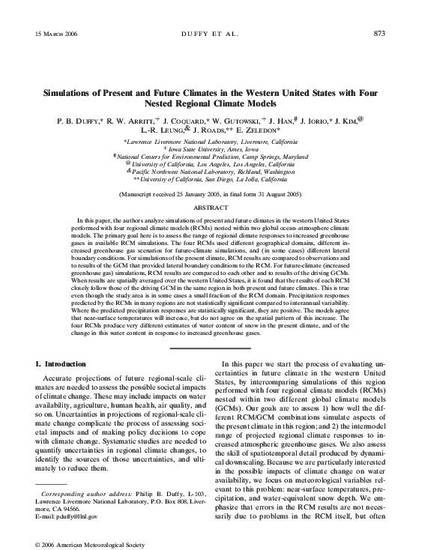
In this paper, the authors analyze simulations of present and future climates in the western United States performed with four regional climate models (RCMs) nested within two global ocean–atmosphere climate models. The primary goal here is to assess the range of regional climate responses to increased greenhouse gases in available RCM simulations. The four RCMs used different geographical domains, different increased greenhouse gas scenarios for future-climate simulations, and (in some cases) different lateral boundary conditions. For simulations of the present climate, RCM results are compared to observations and to results of the GCM that provided lateral boundary conditions to the RCM. For future-climate (increased greenhouse gas) simulations, RCM results are compared to each other and to results of the driving GCMs. When results are spatially averaged over the western United States, it is found that the results of each RCM closely follow those of the driving GCM in the same region in both present and future climates. This is true even though the study area is in some cases a small fraction of the RCM domain. Precipitation responses predicted by the RCMs in many regions are not statistically significant compared to interannual variability. Where the predicted precipitation responses are statistically significant, they are positive. The models agree that near-surface temperatures will increase, but do not agree on the spatial pattern of this increase. The four RCMs produce very different estimates of water content of snow in the present climate, and of the change in this water content in response to increased greenhouse gases.
Available at: http://works.bepress.com/william-gutowski/61/

This article is from J. Climate, 19, 873–895. doi: http://dx.doi.org/10.1175/JCLI3669.1. Posted with permission.